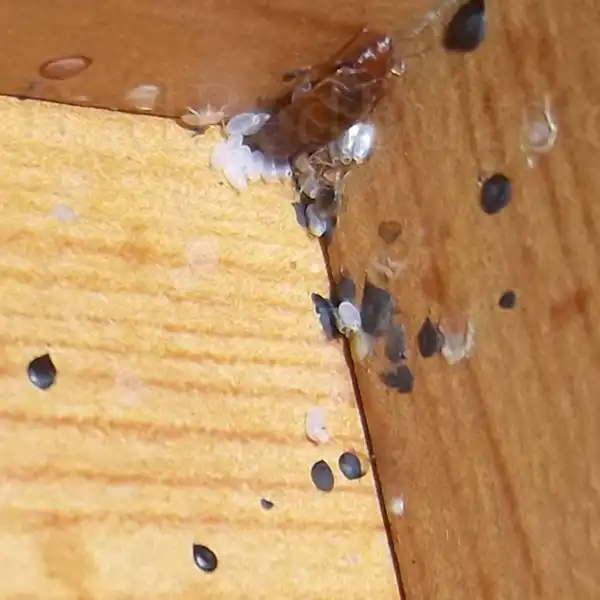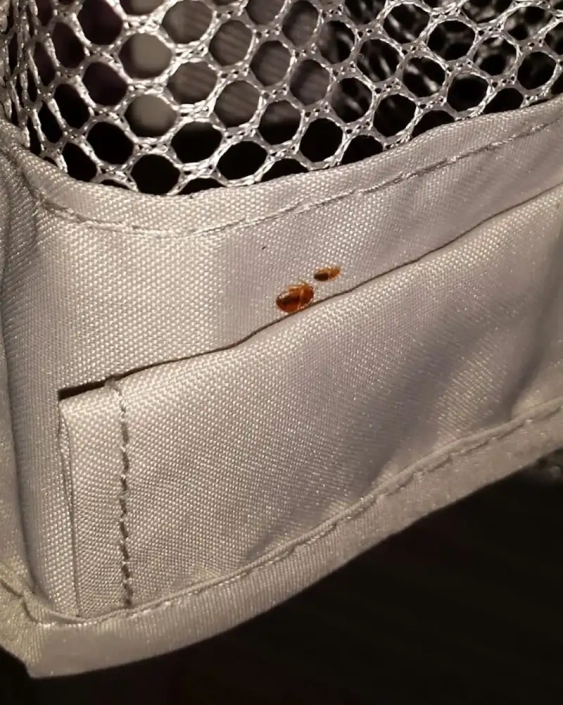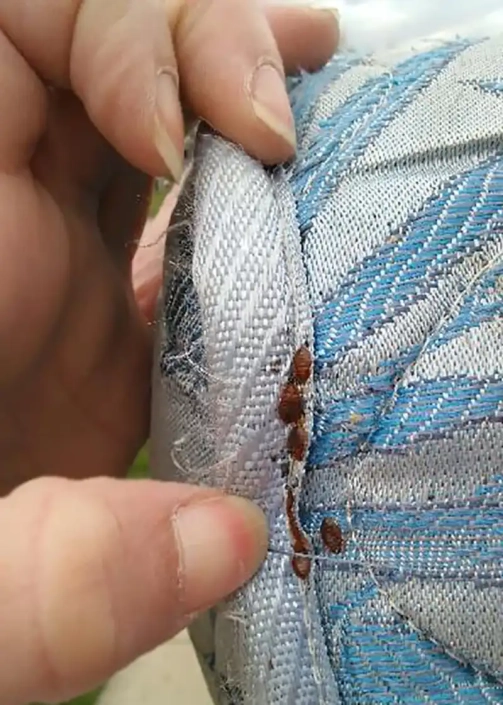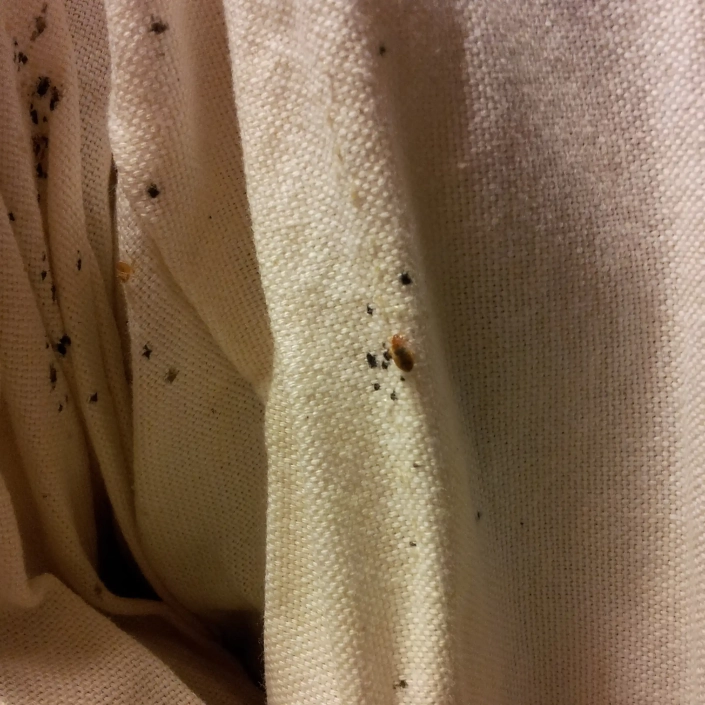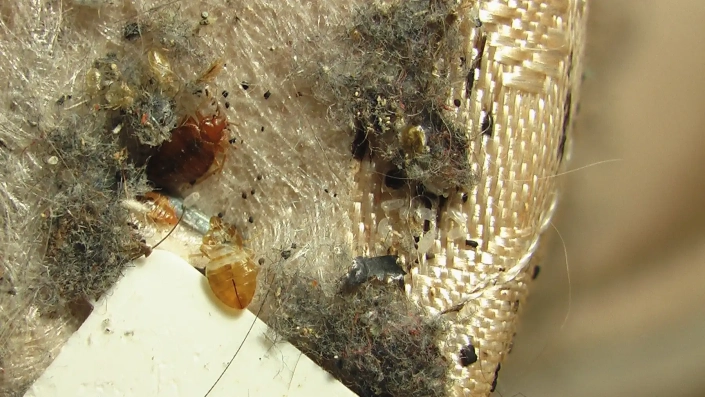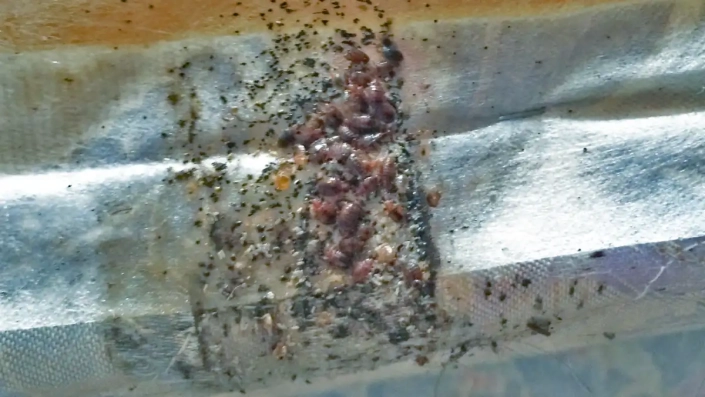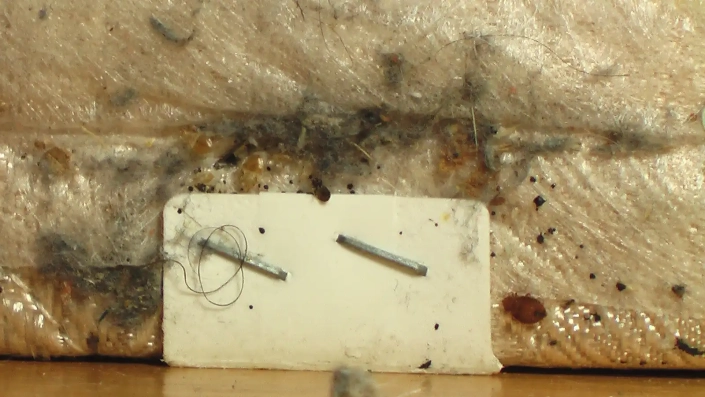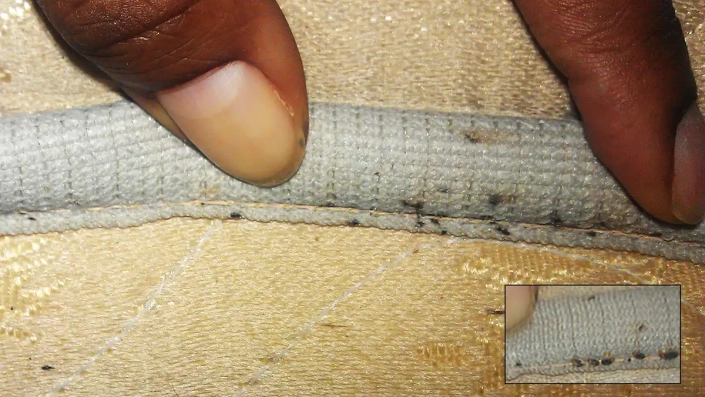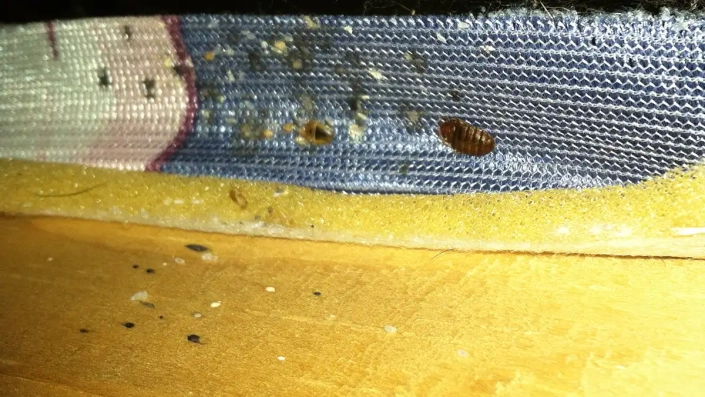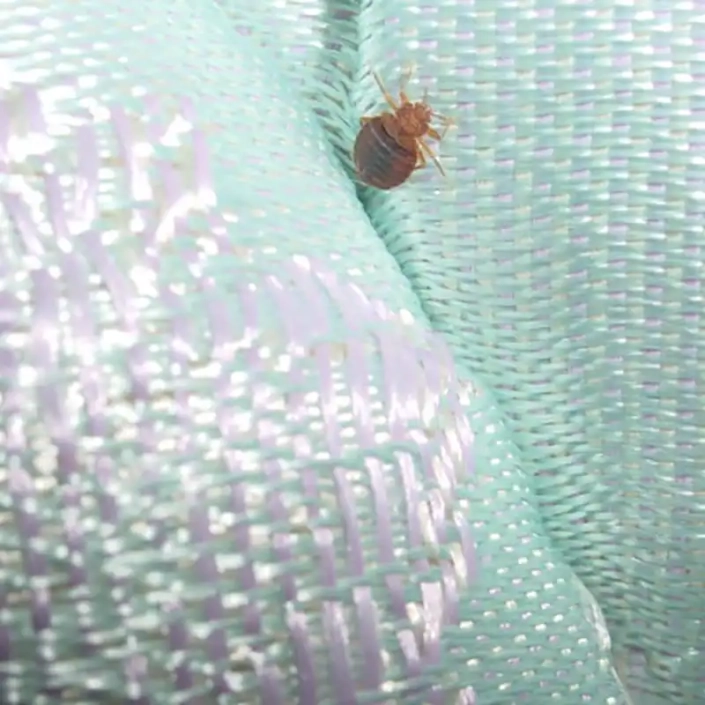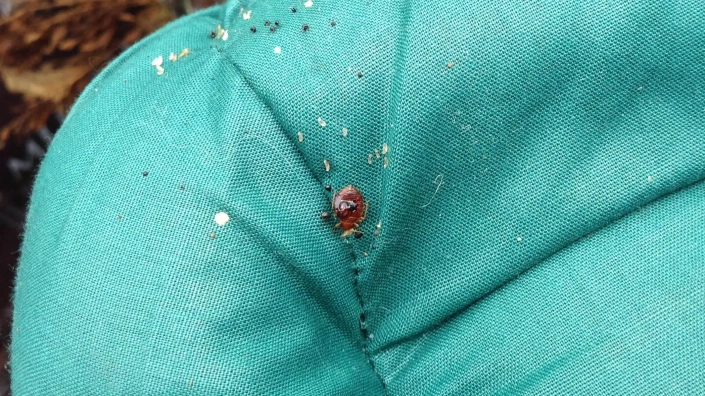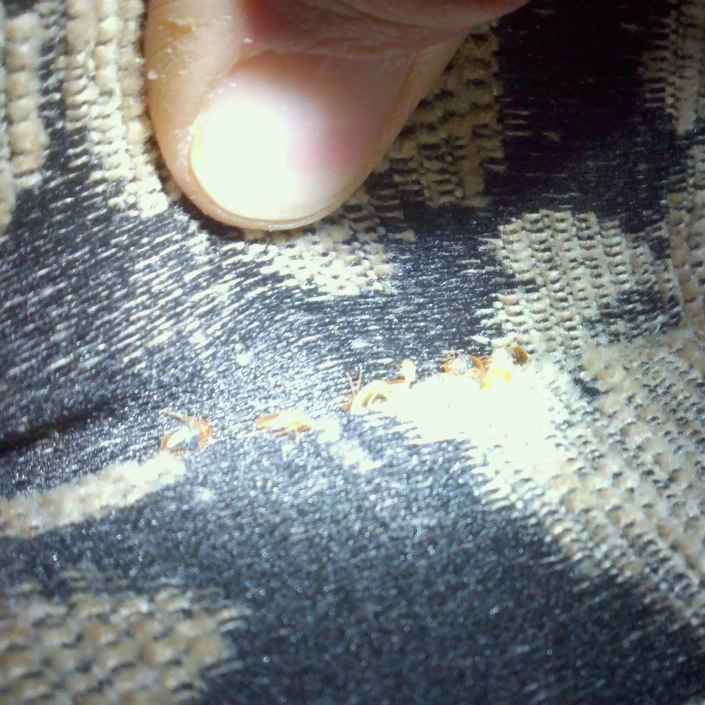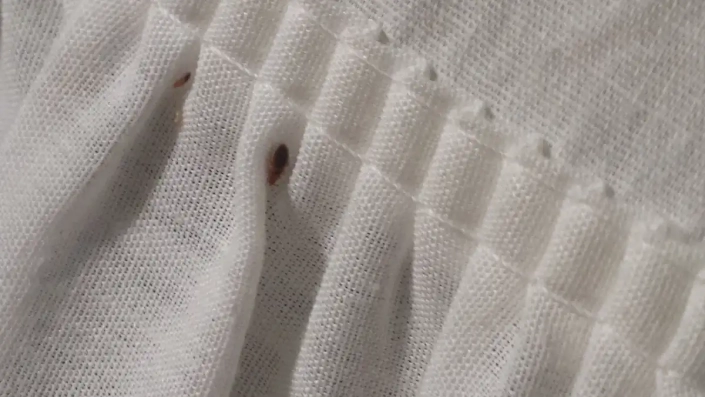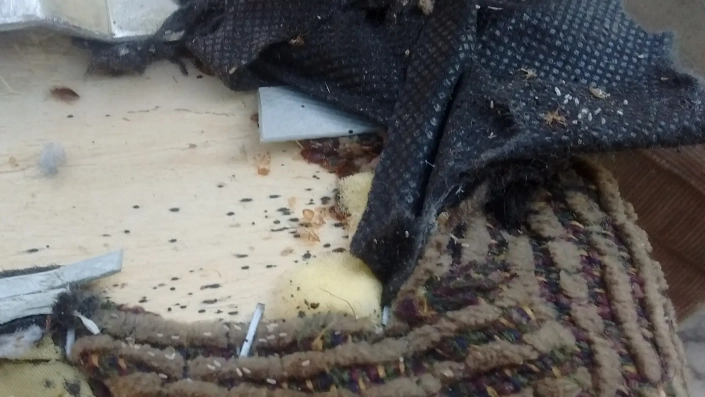Bed Bug Infestation
Waking up with itchy red welts on your skin may indicate you have a bed bug infestation. You may also notice small blood stains on your sheets or tiny black spots (bed bug feces) on your mattress or furniture, as shown in the pictures below.
Bed bugs can be difficult to see because they are so small and good at hiding, but you may be able to see them if you look closely. They are usually found in the seams of mattresses and box springs, but they can also hide in tiny cracks in walls and furniture.
A mattress is by far the most popular breeding ground for bed bugs. Let’s face it, you are food, and the folds of a mattress are close to your body. When the lights go out, and you start exhaling that carbon dioxide, it might as well be a big red sign that says “Now Serving.”
The first image shows an infestation of a bed headboard that had to be torn apart to take this photo. Next is a picture of a female bed bug, her eggs, and the baby (can you see it? Hint: it’s translucent).
The second photo is of an infested crib. The third is a mattress seam being pulled down to expose a nest.
In the fourth picture, you can see the telltale signs of a bad furniture infestation and the black dots indicating a lot of feeding and associated droppings.
Pictures of Infestations
The fifth and seventh images have everything going on in the nest. It took the person months to find these bugs.
One of the worst, the sixth photo, shows an infestation entirely out of control. I feel sorry for the people who sleep next to them!
Yet another mattress, image eight, shows how much bed bugs love seams! Number nine is an image of a box spring, while ten and eleven are pillow and cushion infestations.
The following two photos are self-explanatory. In the last picture, the couch had to be torn apart to see the extent of the infestation. Notice the white sticky eggs on the outside of the sofa; that indicates a lot more going on under the fabric, which shows adults, casings, droppings, and more.
Where do bed bugs come from?
A bed bug infestation can be found in both clean and dirty environments. They are often found in hotels, motels, and other places where there is a high turnover of guests. Bed bugs can hitchhike into your home on luggage, clothing, or other personal belongings. They can also enter your home through secondhand furniture or by traveling through walls from adjacent apartments.
How do bed bugs spread?
Bed bugs are excellent at spreading from place to place. They can crawl onto your clothing or belongings and be transported to new locations. They can also travel through walls and enter adjacent apartments or hotel rooms.
Bed bugs can survive months without feeding, so they can be hard to eliminate once they have infested your home.
Bed bug infestation myths & misconceptions
There are many myths and misconceptions about bed bug infestations. Here are some of the most common:
- Bed bugs only infest dirty homes: This is not true. Bed bugs can be found in both clean and dirty environments.
- Bed bugs only infest beds: While bed bugs are commonly found in beds, they can also infest other upholstered furniture, such as sofas and chairs.
- Bed bugs are only found in low-income areas: Bed bugs can be found in all types of neighborhoods and homes.
- Bed bugs can be eliminated with bug bombs: Bug bombs may not be effective for eliminating bed bugs and may make the problem worse by causing them to spread to other areas of the home.
Bed bugs can be a difficult and frustrating problem to deal with. However, by knowing how to identify, treat, and prevent bed bug infestations, you can protect yourself and your home from these pesky insects.
Remember to inspect your accommodations when traveling, regularly clean and vacuum your home, and if you find you brought one home, see how to get rid of bed bugs.
